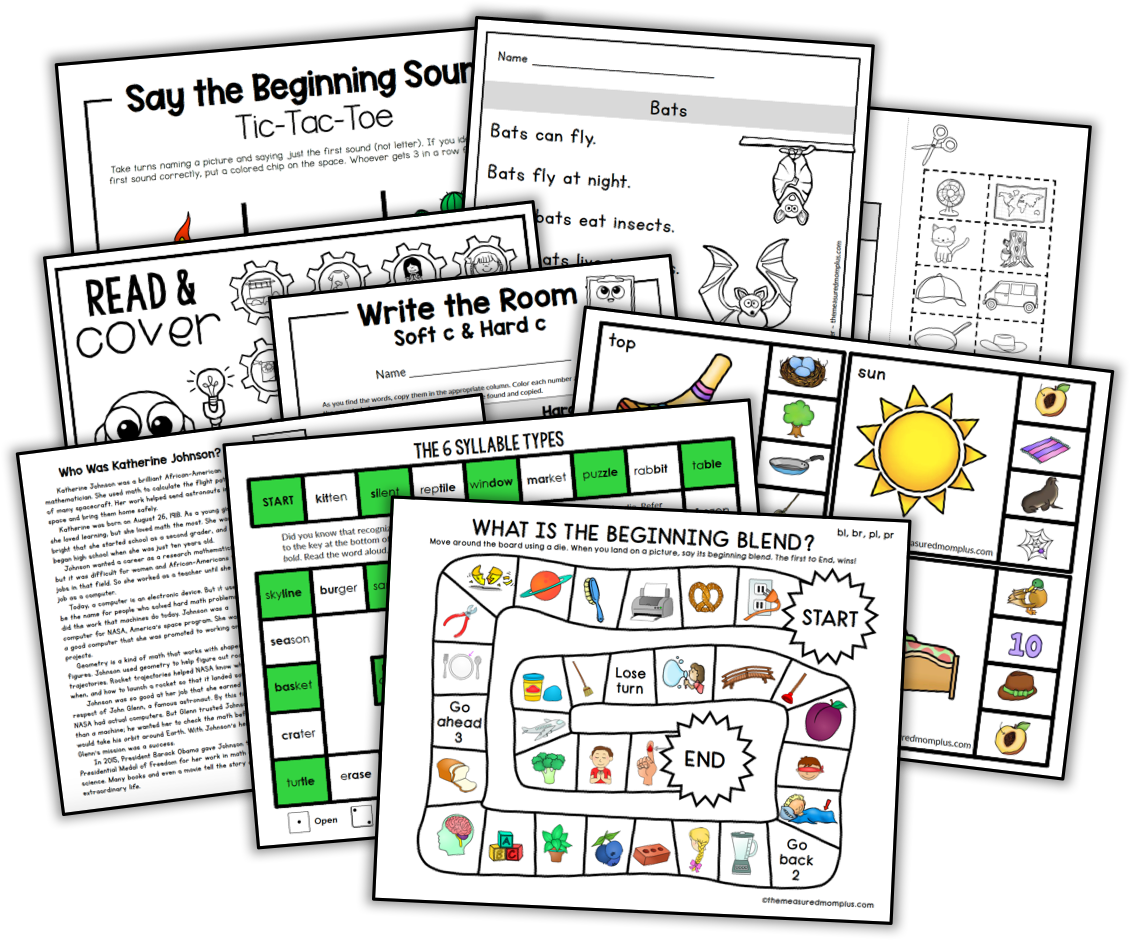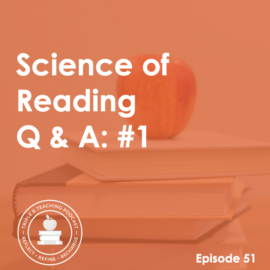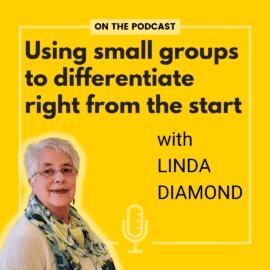TRT Podcast#77: Whole class vocabulary activities to make those words STICK
These simple activities will help your students make new words part of their expressive vocabulary … and they take just a few minutes each!
Listen to the episode here
Full episode transcript
Hello, hello! Anna Geiger here with Episode 77 of the Triple R Teaching podcast. Today we're talking vocabulary. We're going to talk about what it looks like when you're introducing vocabulary in the context of your whole class read alouds, and then we'll talk about some simple, easy activities that you can do during the rest of the week to help students embrace these words and really make them part of their own vocabulary.
**Are you ready? It's coming soon. The doors to our online course, Teaching Every Reader, open to the public only twice a year, and they're opening again on May 16th, 2022! When you join you'll get lifetime access (including all future updates) to eight video modules, which include printable resources, assessments, and dozens and dozens of student resources. One of our students, Sarah, had this to say, "I absolutely loved this course and have recommended it to our entire district. For the first time ever I feel confident knowing that I have the tools I need to teach reading well." To learn more, visit teachingeveryreader.com.**
I really think it's important to teach new words in the context of a read aloud or text that students are reading, rather than refer to a list of tier two vocabulary words for grade one or whatever grade you teach. I think it makes much more sense to teach in context, because as much as we might like to have one, there is no list of words for first grade, second grade, third grade, etc., it just doesn't exist.
What we're really going for is to teach those tier two words. Tier two words means words that are words you're going to hear - perhaps in conversation, or you're going to read, but they may not be words you're familiar with. These are high utility words, but they're not basic words. They're a little more advanced, but they're also not technical.
A tier three word would be a word like "baleen" if you're studying whales. Those words certainly have their value, but typically when you're teaching vocabulary from a read aloud, unless it's a very specific nonfiction text, you're going to be teaching those tier two words.
The cool thing is the words don't actually have to be in the book. Sometimes when you're teaching kindergarten or first grade, there's a really great book you want to read aloud with a good message and a lot of good things to discuss, but there isn't really any advanced vocabulary in the book. You can choose words that are related to the content.
For example, I was reading aloud to my little guy a number of months ago, and we were reading a book called "The Art Lesson" by Tomie dePaola. I believe it's a true story about the author when he was young and his experience in art class in school, but there's no advanced vocabulary, so I put the words "excited," "frustrated," and "disappointed" on sticky notes and we used those to mark how he was feeling in different parts of the book. First, I discussed what the words meant, then we applied their definitions to the text, and at the end we went back to look at the different parts of the book when he was feeling those emotions.
So your first step then after you've chosen your read aloud is to pick your vocabulary words and consider related words if there are no specific words in the text you want to teach. Before you do the reading, introduce the words, talk about them a bit. It's up to you how much in detail you want to go about their meanings, if you're going to be using words whose meanings can be figured out using context, you may want to wait.
You might say, "One of the words we're going to be learning about today is 'damp.' Keep your ears open for that word, I'm not going to tell you what it means. When we get to it I want you to think about what it could mean based on the context." Then as you read you'll stop briefly to talk about each of these words, and when you're finished reading you'll discuss them again.
So that first step is to choose the words based on the read aloud you're reading and introduce them.
But, of course, that may not be enough. It's also good to have review activities throughout the week, perhaps throughout the year, that come back to these words so that students can really make them a part of their own speaking and writing vocabulary.
One that I like to do that's very, very simple is Thumbs Up, Thumbs Down. I ask a question or maybe make a statement using one of the words, and if students agree, they put a thumb up, if they disagree, they put a thumb down.
For example, let's say the word is "delighted." I might say, "I was delighted when I found out that we were having mashed potatoes for supper." Now, everyone can have a different opinion, right? Actually my little guy can't stand mashed potatoes, he can't stand potatoes of any kind which I think is really odd, but it's been like that since he was a baby. I always make him have a tiny bit of one, which is always too much. Regardless, he would put his thumb down for that sentence.
You could just have a few of those example pre-written and ready to go so that when you finish the read aloud it could be your review activity, or you could put it on a clipboard and do those the next day when you have a couple of minutes.
Something else to do is to have a simple discussion using the word. Let's say the word is "cautiously." You could say, "If you're walking through a dark cave, you need to do it cautiously. What are some other things that you should do cautiously?"
Another activity that I like to do is Fill in the Blank. Let's say you've got three words that you're working on with a read aloud, which I think is a good number. You could have a set of three sentences where each one needs a blank filled in, and it would be one of those three words. I like to have the three sentences relate to each other, to kind of tell a story. I do multiple sets, maybe three sets of sentences, so that's nine examples where we're going to fill in the blank. You could put those sentences up on the board if you want and have the words on cards and students use sticky tack or something to put them in their spot, or you could put this on a screen and have them move the word, or you could just do it orally. Although I think it's really good to have the sentence displayed for kids, it really helps.
Something else you can do is have your students complete a semantic gradient activity. A semantic gradient is a list of words in order by degree, and it's somewhat subjective, there's not always one exact answer.
For example, let's say you've taught your students the word "dart." As in you "dart" somewhere, as in a synonym for "walk" or "run." You could put a whole bunch of other words that are related to that on little index cards and have students work together in groups to put them in order from slowest to fastest. So there might be words like "crawl," "meander," "stroll," "walk," "jog," "dart," "run," "sprint." See what I mean?
When they work together with that they really have to think about the meanings of the words and the benefit of doing it in a group is that some students may not know some of the words but others may. Semantic gradients can be useful, it won't work with every word, but that's just something to keep in mind.
You could also have students act out the word if possible. I was recently reading aloud "Little House in the Big Woods" by Laura Ingalls Wilder to my youngest two, they're in kindergarten and second grade. We were reading the chapter where the grandpa in the 1800s had to walk solemnly to church. He could not smile. He could not laugh. He could hardly even talk. I had my kids show me what that would look like to walk solemnly. We acted out what it would be like to sit solemnly in church and stare right at the preacher and not turn or anything. This, I think, really helped them solidify the words. So acting out is another good one.
Finally, this is something I heard about somewhere, I can't remember, it was a particular blog years ago and they called the vocabulary words they had taught brain words. Whenever students heard the word in a different read aloud or a different context or maybe even in conversation in class, they would tap their brain as a signal to say hey, we know that word! That just promotes awareness around the words that you've already taught.
So there you go. Those are some ideas for helping your students really master the new vocabulary that you're teaching them. You can get the show notes, including the transcript, so you have all of these at your fingertips at themeasuredmom.com/episode77. I'll also include some links to some of my favorite books for vocabulary activities.
Thanks for listening and I'll talk to you again next week!
Sign up to receive email updates
Enter your name and email address below and I'll send you periodic updates about the podcast.
Related resources
- Do’s and don’ts for teaching vocabulary (blog post)
- Bringing Words to Life, by Beck & Beck
- Word Nerds, by Brenda J. Overturf








Leave a Comment